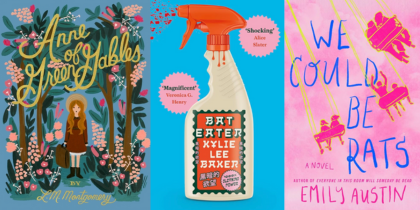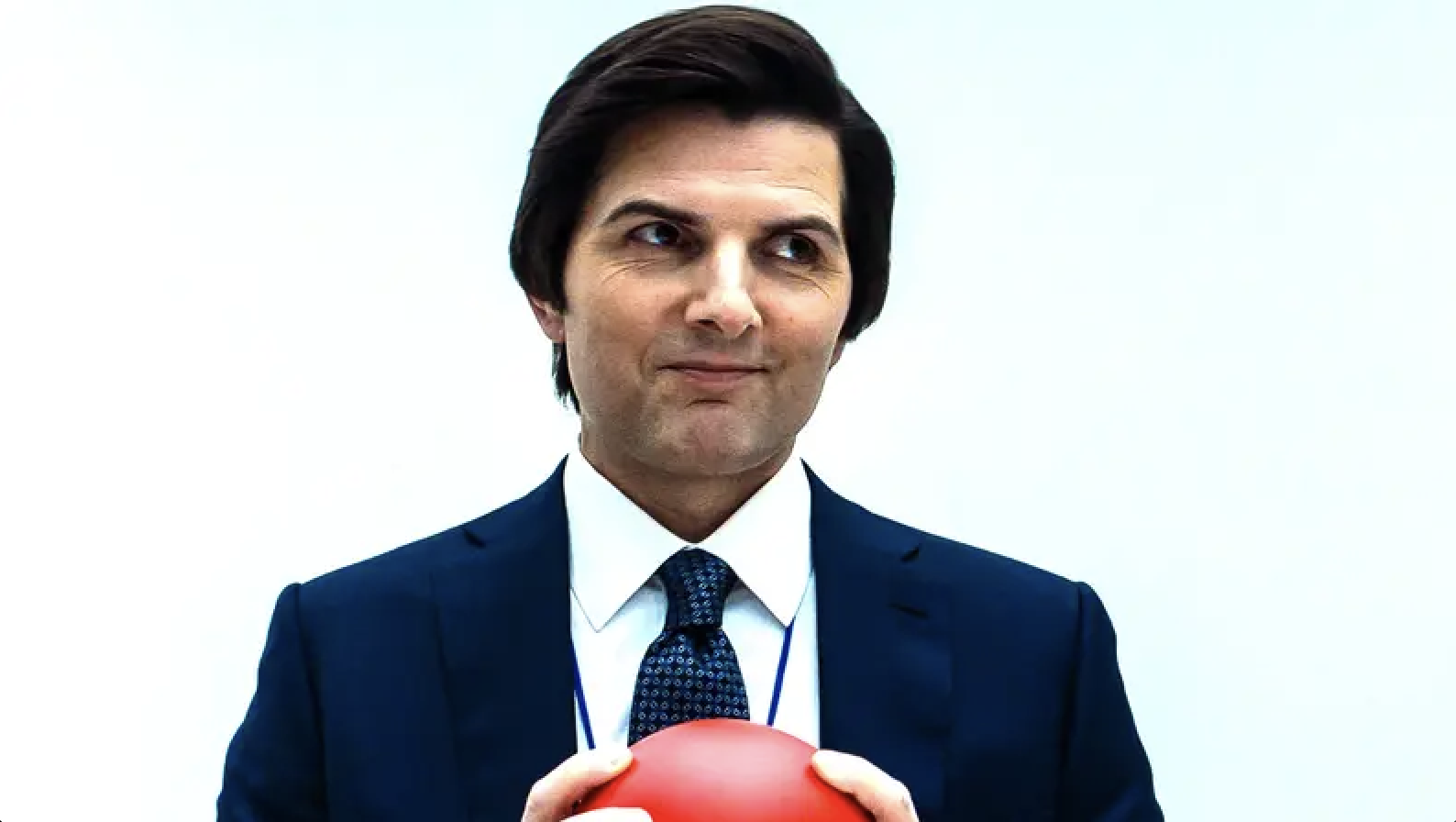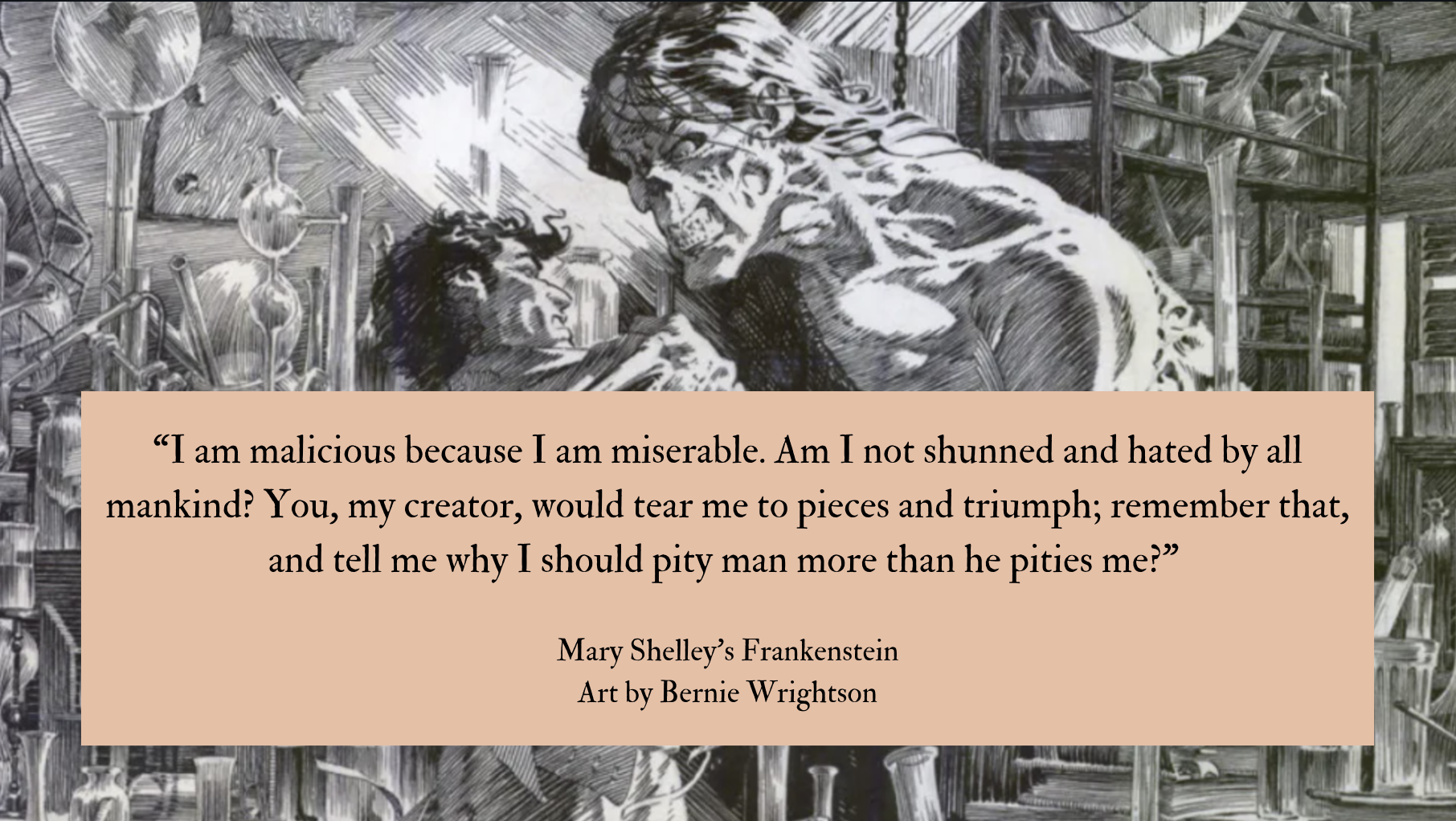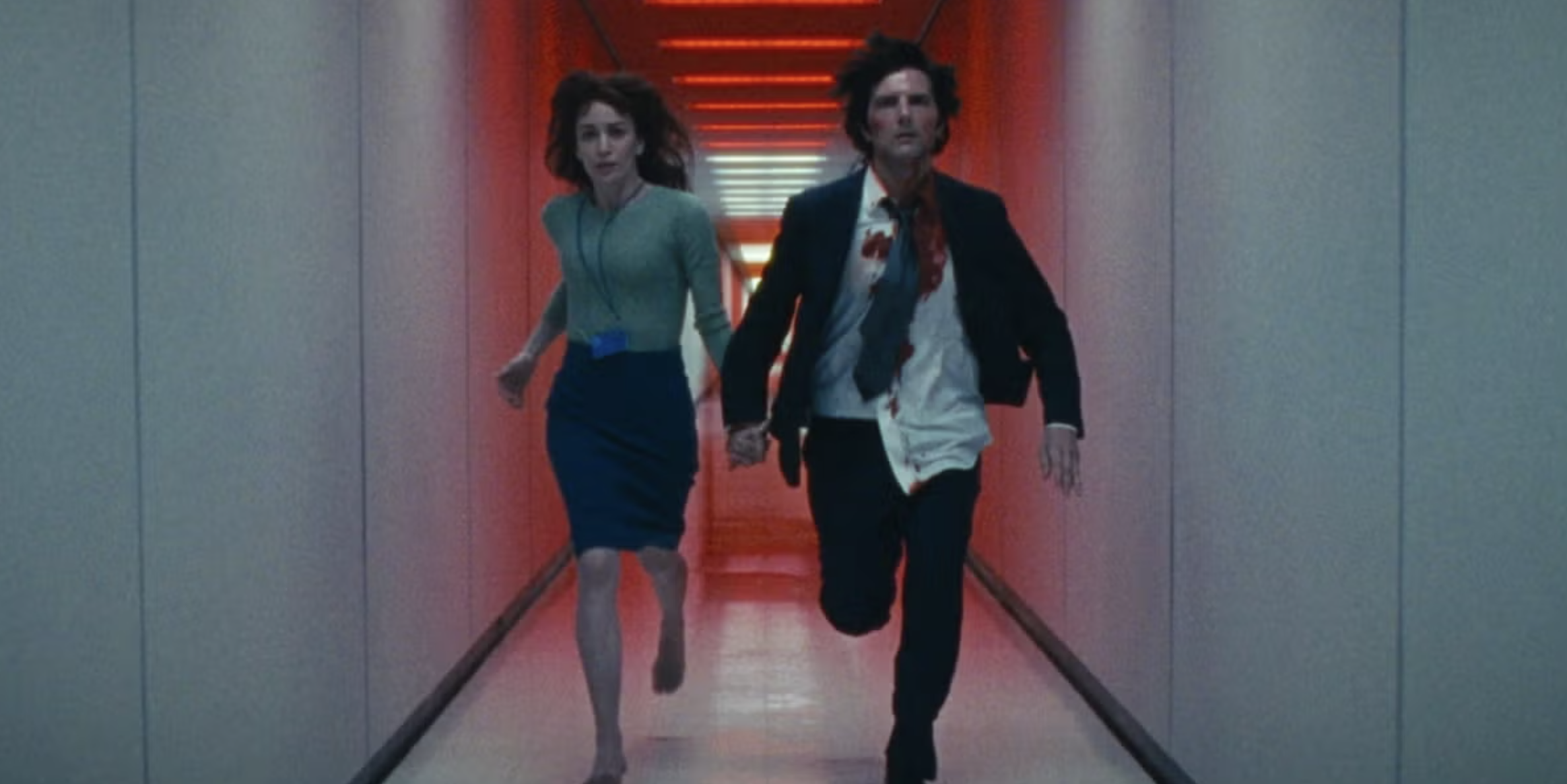Listen Up Fives, A Ten Is Speaking: My May 2025 in Media
The weather is finally turning (intermittently) overcast and drizzly in my particular spot on the Earth’s crust, which means that conditions are finally allowing me to enjoy media in my preferred manner: snuggly.
May’s digital collage looks deceptively springy, but that’s just Western Australian late-Autmn.
BOOKS READ:
The Siege of Burning Grass by Premee Mohamed (2024)
Format: Paperback (Solaris)
This time last year I’d never even heard of Premee Mohamed. Now, having since consumed three novellas, a short story and this, her debut fantasy novel, she’s become an autobuy, a priority read, and is well on her way to becoming one of my favourite authors. She has really interesting ideas and isn’t afraid to play with form, style and genre in her pursuit of them.
The Siege of Burning Grass is that rarest of delights: a 350-page standalone second-world (science) fantasy. In it, we follow Alefret, a deformed and disabled pacifist who is forced into a covert mission with a violent extremist to end a war. It’s a slow-paced meditation on the nature of war, colonisation and propaganda, on the ethics of non-violence in a time of horrors, and on the foolishness of judging a person’s intelligence by their appearance. It felt fresh while also reminding me a little of Octavia E. Butler and Ursula K. Le Guin in their ability to write incredibly rich, incredibly interesting genre fiction with something to say. It’s not a perfect book — it meanders and repeats itself a little — but if you’re a genre fan, Mohamed is someone you’re going to want to get familiar with.
Chain-Gang All-Stars by Nana Kwame Adjei-Brenyah (2023)
Format: Audiobook, narrated by Shayna Small, Aaron Goodson, Michael Crouch, Lee Osorio (Harville Secker)
Chain-Gang All-Stars was my favourite book of 2023, and I’ve been wanting to reread it ever since. I have finally let myself, this time in audiobook format, because I’d heard great things about the performances. And oh, boy, did I love this book even more than I did the first time.
Told in a patchwork of stories and styles from a wide cast of characters, Chain-Gang All-Stars follows Loretta Thurwar from her first to last appearance on the Chain-Gang All-Star Circuit: a new American extreme sport and reality TV phenomenon that pits convicted criminals against each other in gamified death matches. This is another book that reminds me of genre goddess Octavia E. Butler’s work. It has so much to say about the US for-profit prison system and its many, many victims, arguing eloquently in favour of prison abolition while acknowledging the complexity of emotions abolition evokes and the difficulty of putting forgiveness into practice. It’s gory, horrifying, complicated, and full of love. An absolutely masterful debut from a writer I’m so excited (but will wait patiently) to read more from.
The River Has Roots by Amal El-Mohtar, illustrated by Kathleen Neeley (2025)
Format: Hardcover (Arcadia)
It’s been such a banger of a reading month, my goodness. At long last, Amal El-Mohtar, co-author of the absolutely fabulous This Is How You Lose The Time War has her own novella out and it is wonderful.
The River Has Roots is an original fairy tale come murder-ballad about two sisters living on the edge of Fairy. It’s too short to give you much more than that, but it’s impressively faithful to old fairy-lore while also feeling fresh and wholly new. El-Mohtar’s writing is rich and verbose in a way that might risk being too much (for me) from any other author, but the way she builds music, grammar and the many peculiarities of the English language into her magic is so clever. This feels like a story that should be told to you at the knee of a very charismatic old woman.
A seriously prolific short story author, Amal El-Mohtar also has a short story collection, Seasons of Glass & Iron coming out early next year. I’m extremely keen.
The Wood at Midwinter by Suzanna Clarke, illustrated by Victoria Sawdon (2024)
Format: Hardcover (Bloomsbury)
The River Has Roots reminded me more than a smidge of Susanna Clarke’s lovely way of writing magic, and reminded me that I had a similarly small fairytale from her sitting on my shelf, not yet read.
The Wood At Midwinter is a short story bound in a beautiful hardcover and tells the story of a saint who walks the woods in midwinter, desperately in want of a child. It’s short, it’s lovely, it’s set in the world of Jonathan Strange & Mr. Norrell, and the author’s note at the end is a really delightful insight into Clarke’s brain and the magic that surrounds her in a casual way. A morsel of a book, but a scrummy one. I’d love to see more short stories given a sweet little binding.
One Day Everyone Will Always Have Been Against This by Omar El Akkad (2025)
Format: Paperback (Text Publishing)
On October 25th, 2023, in retweeting a video showing the aftermath of an Israeli bombing of Gaza, journalist and author Omar El Akkad posted: “One day, when it's safe, when there's no personal downside to calling a thing what it is, when it's too late to hold anyone accountable, everyone will have always been against this.” This post was retweeted 59,000 times and liked by 178,000 users.
This book, which is part memoir, part long-form journalism, part essay collection, expands on this idea from El Akkad’s experience as a journalist covering the Iraq war and various other beats, and as an Egyptian-born Muslim man named Omar living first in Canada, and then the United States. It’s a thoughtful, often scathing exploration that unravels the myth of America and its allies as peaceful or morally superior forces in the world, weaving past and present together to paint the USA as the empire it has been for at least the last century. It’s an easy read in that El Akkad is a wonderful writer and the chapters flow well, one personal or professional anecdote leading effectively into global horror and back again, but challenging in the emotions it stirs. Having been paying attention to Israel’s genocide since October 2023, much of his reporting brings back visceral images, reminding me of things I’m ashamed to have already forgotten, and showing me that I’m already falling prey to this normalising of mass violence, that as much as I want to consider myself aware, and on the “right side” of history, society, and the left-right divide, my brain is already trying to block out images of Palestinian suffering I thought would be engraved on the inside of my eyelids forever.
A short, powerful piece of non-fiction, and one well worth reading.
MEDIA WATCHED:
Andor, season 2 (2025)
Streamed on Disney+
What a finish! What a show! There’s so much to say about Andor as a second season and also as a complete piece—I’ve been trying to write a standalone blog about it for weeks now—but for the purposes of brevity I’m just going to applaud Tony Gilroy for creating an entry in the Star Wars universe that dares to feel unique, to trust its audience, to embrace adult storytelling and themes without violating the all-ages-welcome aesthetic and language of the show, and to engage with the age-old tradition of good science fiction reflecting the world we live in back at us. So much of Star Wars takes place under a fascist regime, and involves its heroes standing up to the evils of empire, and yet Andor is the project to finally sit down and look at what that means: politically, societally, and personally. It’s an incredibly interesting Star Wars entry, and is all the stronger for mostly eschewing the two things Star Wars properties have come to over-rely on: The Jedi, and interconnected lore. A bit of a shame it must, by necessity, lead on to Rogue One, but I’m looking forward to rewatching and maybe, finally, writing reams about all the very interesting character and storytelling choices it made within the confines of its franchise.
Cassian Andor and Bix Caleen: Bonafide Babes.
Conclave (again), (2024)
Owned on BluRay
There are some people who can resist the lure of watching the absolutely stunning Elect-A-New-Pope movie when the irl papal conclave is electing a new pope, but I am not one of them.
See April’s media wrap up for slightly more coherent thoughts on this one.
Isabella Rossellini: Always a ten in a sea of fives.
Inside Llewyn Davis (2013)
Rented from AppleTV
It’s hard to believe there was a time when “Oscar Isaac” wasn’t synonymous with the concept of on-screen handsomeness, but that was the history of the world before the Cohen Brothers made the excellent choice of casting him to play the lead in their saddest movie. Inside Llewyn Davis follows its titular character through a disappointing week in what seems to be a pretty disappointing life. Llewyn is a former merchant-marine turned folk singer in New York in 1961. It is the dead of winter, and he has no home, no winter coat, his former collaborative partner is dead and his solo album isn’t selling. He survives by playing the odd gig and cycling through an ever-shortening list of people who are willing to let him crash on their couch for a few days. He is unpleasant, defensive, and he sleeps with his friend’s wives. He is a fuck-up on basically every axis you can think of, and the film presents no solution, no way out, not even the faint promise of a happy ever after. Llewyn is a depressed man with some talent, but not enough. Some friends, but not the one he needs. Some family, but not for much longer. Many people have theorised over the years, and I think broadly agree, that this film, about the despair and inertia that follows a broken creative partnership, could be Joel and Ethan Cohen’s way of speculating what life might look like for one of them when the other dies. A love letter, perhaps, to how important they are to each other, and an acknowledgement that everything ends eventually, even if you, paradoxically, have to go on for at least a while longer.
This was my second time watching it, the first being way back when it was released. I loved it then, and I loved it now, but in the different ways you can love a thing when you’re 26 and 38. Then, I thought it was incredibly romantic movie about suffering for your art. Now, I think it’s a reflection on the fact that not only does not everyone make it, but almost nobody does. Which is a bummer, I guess, but one you can read a whole lot into. And you should know by now that I love to be sad and overthink things.
Oscar Issac, handsome and cold.
The Last of Us, season 2 (2025)
Streamed on Max
Oof. I hate to say it, but this season was a massive flop for me. The reasons why are too numerous to list here (I tried and then had to delete a 900 word rant) but the short version is that, despite some bright spots, great visuals and lovely performances, The Last of Us season two doesn’t work for me as either an adaptation of the game (which, I’ll be upfront, also made a lot of choices I don’t love) or as a standalone piece of television, despite trying very hard to be both. It’s caught somewhere in the middle, and as a result serves up seven sluggish episodes that put their focus in all the wrong places. I don’t know what must have been going on behind the scenes re: HBO Max, game creator Neil Druckmann’s openness (or not) to changing the format of the story, or a case of nightmare actor scheduling to have led us to this, but I expected something with much more purpose from Craig Mazin, who is an incredibly skilled writer and showrunner, as well as an avid game guy who I am confident understands the difference between storytelling in TV and storytelling in games. I so badly want to shout about gameplay as being vital to character understanding and storytelling, but I’ll just push it all down like a healthy adult who recognises that there are significantly larger problems in the world than a TV adaptation of a game sucking a bunch.
Anyway. The main saving grace here is Isabela Merced, who is a stone cold delight as Dina (my admitted fave from the game… I’ll own a bias when I see one), and Bella Ramsay, who is doing the best they can with the tonal mess they’ve been given.
Nice gay time ruined by that whole revenge spree Ellie is half-heartedly on.
Murderbot, season 1 (2025)
Streamed on AppleTV
Only four episodes of Murderbot are out at time of writing, so I’ll save my thoughts until the season is over, but gosh am I optimistic about this one. If you’re not up to date on your sci-fi reading, Murderbot is an adaptation of the first book in The Murderbot Diaries series by Martha Wells, focusing on the first novella, All Systems Red. These books are beloved in the sci-fi community, particularly in neurodivergent and queer spaces, so lots of people are having lots of feelings about the adaptation. For my part, and in stark contrast to The Last of Us, I’m really enjoying a lot of the adaptive choices being made. I’m thrilled at the return of the ye olde half-hour adventure comedy format (i.e. closer to 20 minutes than 30, aka the network half-hour) and am enjoying the extremely earnest silliness of the tone. I think it’s already a nice fit for a lot of the humour on display in The Murderbot Diaries and will pair really well with the heart to come. This is currently the only weekly release thing my partner and I are watching, and it’s become something we really look forward to sitting down to.
What’s not to love about an awkward, soap-opera loving cyborg?
MISCELLANEOUS NEWS MEDIA, ESSAYS, PODS and BLOGS I ENJOYED:
“Again and again, the show highlights its characters’ investment in social equality—a formula, to be sure, but one that registers as more galvanizing than cloying. Which is to say, The Pitt’s literalism may be its superpower. In the face of mass institutional acquiescence to fascism, there’s a lot to be said for loudly asserting the value of radical empathy and social justice.”
The Radical Cringe of The Pitt by Charlotte E. Rosen
A piece on how the ever-present, occasionally clunky “wokeness” of The Pitt is just what the world needs right now.
“It's so emblematic of the moment we're in, the Who Cares Era, where completely disposable things are shoddily produced for people to mostly ignore.”
The Who Cares Era by Dan Sinker
A piece on how AI is exacerbating an already worrying trend of declining care and quality in our news, entertainment media, and basically everything else.
“The loom was the only one of its kind in the southern hemisphere, and one of only a handful in the world, bought for the university’s Brunswick campus in the early 2000s, soon after Halton started teaching there. It “elevated what you could do as an artist”, she says. Students enrolled just to have access to it. International artists visited especially to weave on it.”
A New Room For A Doomed Loom - And The Battle To Save Australia’s Slowly Dying Crafts by Stephanie Convery (extremely Parks and Rec headline aside,)
Extremely Parks and Rec headline aside, this is a fascinating piece on how the near-junking of a Jacquard loom reflects the swiftly deteriorating quality of Australian higher education.
Lamestream: A brand new podcast on Australian politics, media, and the relationship between the two hosted by Osman Faruqi and Scott Mitchell. One month in, their episodes have focused on the recent Australian federal election results and coverage, and, more interestingly, the ways in which Australian news media has failed across the board in reporting on Israel’s genocidal assault on Gaza and rapidly accelerating violence and incursion in the West Bank. Osman and Scott have both had long careers as journalists, and it’s great to see them go independent and share their insights into the industry alongside deep dives into what is — and isn’t — making it into the mainstream news.
Deepcut News: More Australian journalists going independent, this time Antoun Issa and Alex McKinnon. It’s early days yet, and having also debuted in the last month their output has likewise largely focused on the Federal Election and Palestine, but I’ve enjoyed what I’ve read so far and am always going to boost the work of journalists who are actually interested in seeking truth and challenging power.
And that it’s it for May, 2025! Let me know if I’ve put anything on your radar, and if you’ve read or watched any of the above (or anything different!) and want to gab about them, my comments are always open!

























